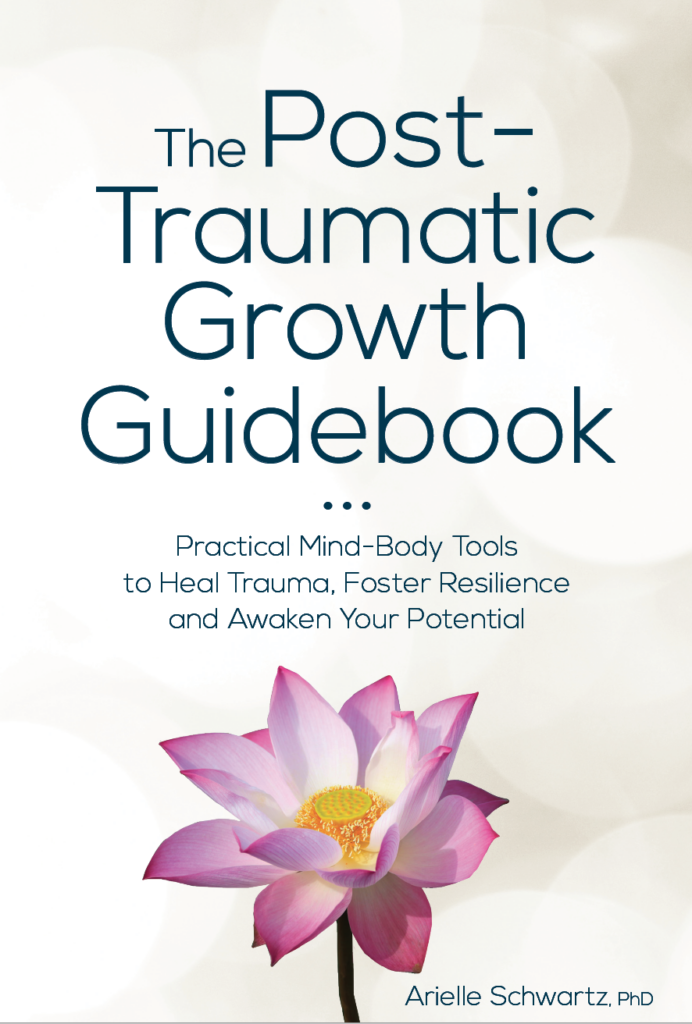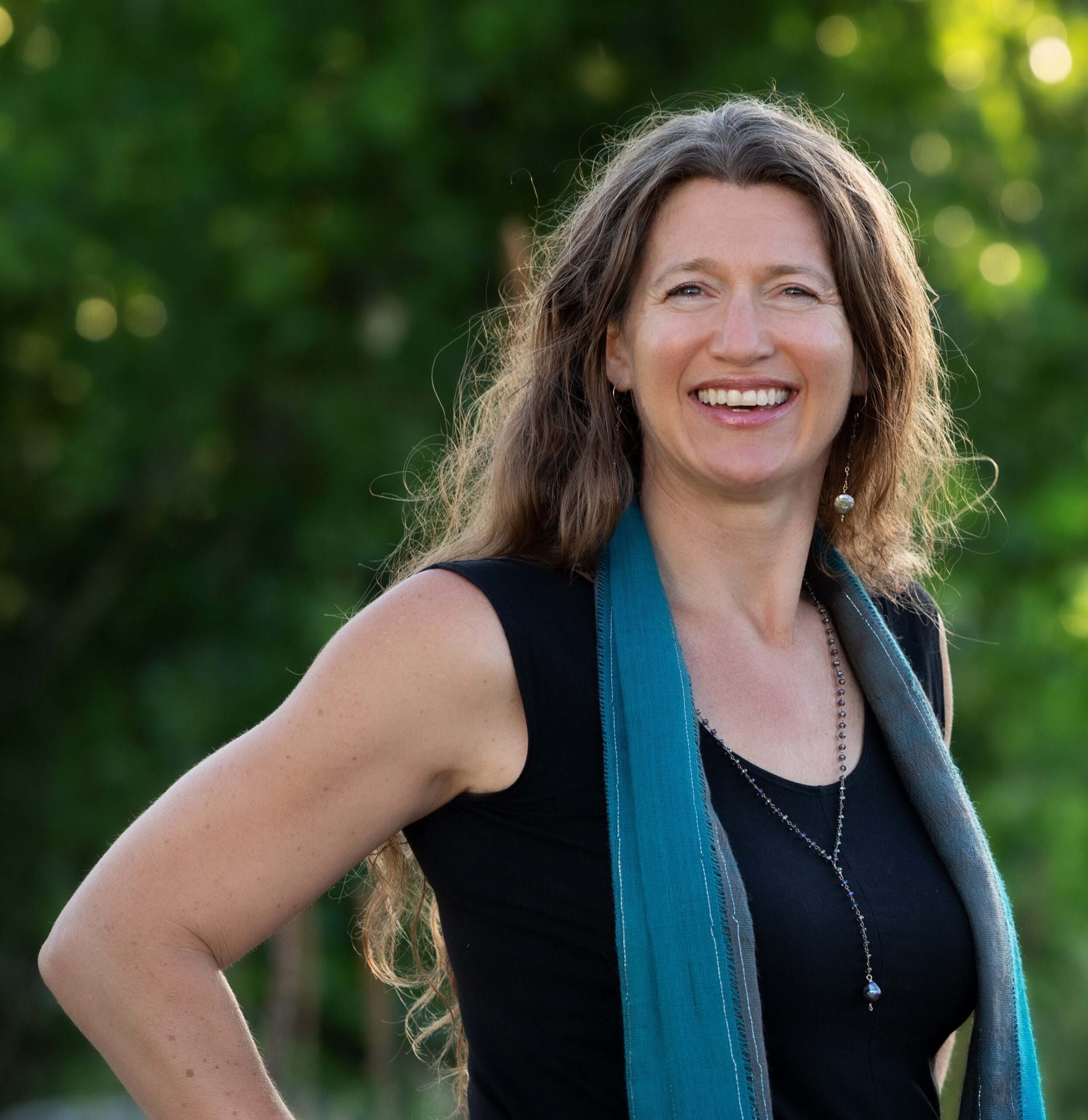
It is your birthright to be loved. You are and always were worthy of care, kindness, generosity, and attention. I invite you to align yourself with this truth. This process involves an intention setting practice—one that invites you to fully love and accept yourself just as you are.
If you have history of trauma, you might find it difficult to access these positive feelings or beliefs about yourself. You may carry faulty beliefs that you are not lovable or that you are unworthy of joy. Or, because of your past, you might have inaccurately concluded that you would never feel like you belong in this world.
One of the ways that you can heal is to take time to create and focus on positive experiences that evoke gratitude, joy, and awe. Each time you notice a good feeling, take time to enhance it a by slowing down, breathing into any positive sensations, and allowing yourself to fully receive the nourishment of the moment.

Sometimes it is difficult to focus on the positive elements of life. This can be especially true if you had to diminish your joy during childhood. You might have memories of being put down for expressing your enthusiasm or exuberance. Or perhaps you were told that celebrating a good thing might make it go away. As a result, you may have learned to dim your brilliance, or you might feel frightened of these uplifting emotions. You might feel as if joy isn’t as important as pain or grief. Or perhaps guilt interferes with your ability to feel happy.
We all have a built-in “negativity bias” that causes us to focus on negative experiences and give them more weight, and this is especially true if you have a history of trauma. In order to counteract this negativity bias, we need to actively look for evidence of positivity and goodness in our lives. Doing so is especially important if you tend to dismiss your positive emotions.
According to Dr. Rick Hanson, you can “hardwire happiness” and combat the negativity bias by following the acronym HEAL: Have a positive experience, Enrich it, Absorb it, and Link positive and negative material (Hanson, 2016). Focusing on positive experiences does not involve denying challenging experiences; rather, it involves integrating nourishing life moments into your life as a whole. As a result, you are more likely to reflect on how your life is a combination of both challenging and joyful experiences. With practice, it becomes easier to recall moments of happiness while simultaneously attending to your pain.

Another way to grow positive moments is to share your joy with others. When you allow another person to know you inside of your joy, this creates an opportunity for an intimate exchange of uplifting emotions. Of course, this practice requires choosing people who will celebrate you and your accomplishments. Your openness can become an invitation for another person to expand into their joy and may spark the blossoming of shared happiness. As a result of sharing, see if you can stay with the positive experience for longer periods of time.
You can also linger in and savor any positive moments by engaging in gratitude practices. Gratitude practices, such as keeping a daily gratitude journal, are associated with positive mood, increased optimism, a sense of connection to others, decreased pain, and better sleep. Experiment for yourself. Notice what happens if you actively seek out the buried treasure and hidden joys of positive moments in your life. Notice the colors, sounds, scents, and tastes of each joyful experience. Give yourself permission to fully enjoy a hot cup of tea or slowly take in each distinct flavor in a favorite meal. Go for a walk outside and take the time to notice the colors of the trees, grass, and sky. Allow yourself to be nourished by the things you love.

Even if it is difficult to leave home and find these moments, you can imagine them in your mind’s eye. For example, imagine being in a place in nature where you are surrounded by spacious beauty. Imagine how it might feel to walk through this place. Do you want your shoes on or off? What are the sensations on your skin? Is it warm or cool? What are the scents in the air? What sounds do you notice? If you find a sense of peace, linger here and enjoy.

What joys do you discover in your breath or in the sensations of your body? What treasures live inside of your imagination? Make a point of finding these positive moments whether they are in your home, the great outdoors, or the creativity of your mind. By allowing yourself to savor these positive moments and pleasurable sensory experiences, you help build your capacity for joy, happiness, and excitement. Just like children love treasure maps and instinctively know the importance of looking for gold or digging up buried treasure, you also have this built-in capacity to look for the good, to persist until you find it, and to allow yourself to celebrate joyfully once it has been found.
It is a great gift to be alive, but we sometimes forget. While it may be buried deep inside, the capacity for pleasure and joy exists in us all. This deep sense of gratitude for life itself is simply awaiting rediscovery. Even if there are pirates, be the child and find the treasures that life holds for you.

In order to help you fulfill your potential, you can get into thepractice of intention setting, which involves putting your goals, hopes,or desires into words. Intentions are a reminder of how you would like to live your life. It is your intentions that bring energy to your actions in
the world. Intention setting invites you to choose a word or create a short phrase that aligns with how you want to live. For example, if your goal is to be less self-critical, then you might set an intention that states, “I intend to love and accept myself as I am.” If you would like to lead a more balanced life, then your intention may be, “I intend to honor what my body needs.”
Keep in mind that your intentions might change over time. For instance,you might initially set an intention to focus on forgiveness, but, over time, this might evolve into a focus on acceptance. It is important to hold your intention loosely enough to accommodate your growth and change. Most importantly, once you have set your intention, give yourself permission tosurrender and trust that you have set an important process in motion.
You can think of intention setting as planting a seed in the garden of your mind. This seed holds the potential for your visions and dreams. However, you must bury this seed in the earth and trust that in time this seed will grow and bloom in a way that energizes and shapes your life. Of course, you must provide the seed with the right soil, water, nutrients, and sunlight. You cannot rush or force the growth of the seed just as you must allow for the full expression of your intention to occur when it is the right time.
While intention setting seems like a personal, self-serving practice, I’d like to invite you to see this practice as “world work.” When you take care of yourself and tend the garden of your own mind you inevitably leave a positive wake behind you. In other words, other’s benefit from your self-care. The more that you feel nourished, the more likely you will be able to support others when they are having a tough time.

What are you seeking to create more of in your life? Here are some ideas:
I intend…
Take your time to identify and write down an intention or set of intentions that support you in reaching your goals.
You can choose to say this intention when you wake up in the morning and again before going to sleep at night. Or if you engage in a regular mindfulness practice, then you can say your intention to yourself or write it in a journal each time to begin your practice. It is also a powerful practice to share your intention with another person, as having a witness to your intention can help anchor it in the world.
Remember, you do not need to hold your intention firmly or with effort. Explore what happens when you trust that you have set a process in motion. Surrender and see what you notice over time.

Often change is subtle. It doesn’t happen all at once. Change accumulates until suddenly our perspective has shifted. Like the subtle changes of light as the sun’s arc and placement marks our transition from season to season. We too grow through subtle shifts. This requires our willingness to believe in the possibility of generosity and love. It is through our active engagement with our ideals that we create a wiser and kinder world. Day by day, our intentions and our actions shape our reality.

This blog is drawn from The Post Traumatic Growth Guidebook: Practical Mind-Body Tools to Heal Trauma, Foster Resilience, and Awaken your Potential. Within the pages of this book, you will find an invitation to see yourself as the hero or heroine of your own life journey. A hero’s journey involves walking into the darkness on a quest for wholeness. This interactive format calls for journaling and self-reflection, with practices that guide you beyond the pain of your past and help you discover a sense of meaning and purpose in your life. Successful navigation of a hero’s journey provides opportunities to discover that you are more powerful than you had previously realized. Click here to order the book on Amazon.

Dr. Arielle Schwartz is a licensed clinical psychologist, wife, and mother in Boulder, CO. She offers trainings for therapists, maintains a private practice, and has passions for the outdoors, yoga, and writing. She is the developer of Resilience-Informed Therapy which applies research on trauma recovery to form a strength-based, trauma treatment model that includes Eye Movement Desensitization and Reprocessing (EMDR), somatic (body-centered) psychology and time-tested relational psychotherapy. Like Dr. Arielle Schwartz on Facebook, follow her on Linkedin and sign up for email updates to stay up to date with all her posts. Dr. Schwartz is the author of four books:

Arielle Schwartz, PhD, is a psychologist, internationally sought-out teacher, yoga instructor, and leading voice in the healing of PTSD and complex trauma. She is the author of five books, including The Complex PTSD Workbook, EMDR Therapy and Somatic Psychology, and The Post Traumatic Growth Guidebook.
Dr. Schwartz is an accomplished teacher who guides therapists in the application of EMDR, somatic psychology, parts work therapy, and mindfulness-based interventions for the treatment of trauma and complex PTSD. She guides you through a personal journey of healing in her Sounds True audio program, Trauma Recovery.
She has a depth of understanding, passion, kindness, compassion, joy, and a succinct way of speaking about very complex topics. She is the founder of the Center for Resilience Informed Therapy in Boulder, Colorado where she maintains a private practice providing psychotherapy, supervision, and consultation. Dr. Schwartz believes that that the journey of trauma recovery is an awakening of the spiritual heart.